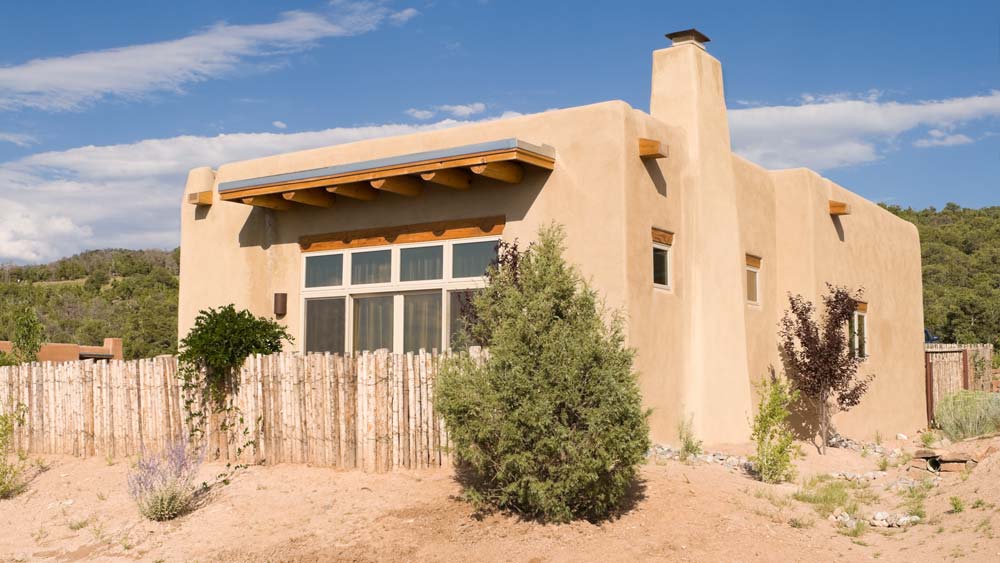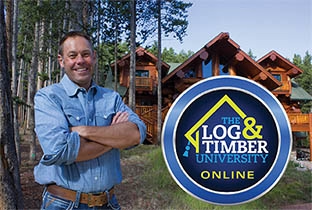
Written by Danika Kimball
In recent years, a growing number of homeowners and builders have re-embraced ancient, natural materials to create healthy, sustainable shelters. Earthen materials, like cob, adobe, rammed earth and hempcrete, are stepping into the spotlight; not just because they're eco-friendly, but because they offer beauty, energy efficiency and long-lasting comfort. For those considering a wood or organic home, adding earth-based components can enrich design possibilities and further align the project with sustainable values. In this article, we'll dive into what makes these materials special, how you can use them in modern organic homes, and tips for sourcing them locally.
What Are Earthen Building Materials?
Before exploring practical uses, it's helpful to understand the basic types of earthen materials commonly used in organic homebuilding:
- Cob: a mixture of clay, sand, straw and water, molded by hand into thick, durable and sculptural walls.
- Adobe: sun-dried bricks made from clay, sand, water and sometimes straw, and is ideal for building straight, uniform walls similar to those made with fired bricks.
- Rammed earth: tightly packed soil between forms to create a solid, dense wall with a beautiful, natural striated pattern.
- Hempcrete: a lightweight blend of hemp hurd, lime binder and water, commonly used as insulation or infill rather than for load-bearing walls.
- Earthbags: fabric bags filled with local soil, which are stacked and tamped into place to form strong, inexpensive walls, making them a highly scalable method.
What these materials have in common is their reliance on natural resources like dirt, straw and plant-based binders instead of manufactured concrete or petrochemical-based products. This makes them largely carbon-neutral, or even carbon-negative, and fully recyclable if the home is ever taken apart.
Benefits of Going Earthen
One of the biggest advantages of building with earthen materials is the use of renewable, local resources. Soil and straw can often be sourced directly from your region, significantly reducing transportation costs and environmental impact. In rural areas, many farmers are even willing to sell or donate straw, making materials like cob or adobe exceptionally cost-effective.
These materials also provide excellent insulation and thermal mass. Thick earthen walls naturally absorb heat during the day and slowly release it at night, helping to maintain a steady indoor temperature without heavy reliance on heating or cooling systems. Hempcrete is particularly effective in colder climates, where added insulation is beneficial.
In addition to energy efficiency, earthen homes support healthier indoor air quality. The materials are entirely non-toxic and breathable, meaning they won't off-gas harmful chemicals like formaldehyde or volatile organic compounds (VOCs). The breathability of the walls also helps regulate indoor humidity and reduces the risk of mold growth.
From a design perspective, these materials offer the utmost artistic freedom. Cob, for example, is moldable by hand, allowing for beautifully curved walls, built-in niches, rounded corners and one-of-a-kind details. Rammed earth adds natural beauty through its layered appearance, creating a warm and earthy visual texture.
Accessibility and Affordability
While building with earth can reduce material costs, labor is intensive. In fact, DIY labor is often the key to success for many. However, these homes are still less accessible to low-income families or individuals unfamiliar with natural building techniques. That's where affordable housing programs come into play.
If you or someone you know is facing limited housing options, it's worth exploring Section 8 housing as a resource. While waiting for a rental subsidy, families can learn about natural building methods, volunteer on organic homes or even start small earth-building projects before committing to a full-scale build.

Incorporating Earthen Materials in an Organic Home
If you're building a log or timber-framed home, earthen materials can be excellent additions to your design. For instance, instead of using costly stone or brick, you might consider installing a cob or rammed earth accent wall inside your home. This not only adds a sense of visual warmth but also improves thermal mass near living areas or fireplaces.
On the exterior, hempcrete or rammed earth can serve as natural infill between timber posts in post-and-beam construction. This combination adds insulation and durability while keeping the structure lightweight.
Inside the home, cob's moldable nature makes it ideal for more than just walls. You can use it to build kitchen counters, oven surrounds, bathtubs or even built-in seating. Beyond the main home, consider incorporating earthen materials into smaller outdoor structures. Earthbags, adobe bricks or rammed earth can be used to construct garden sheds, root cellars or potting benches. These smaller projects offer an excellent opportunity to work with natural materials on a manageable scale before taking on a larger build.
Tips for Successful Earthen Construction
Soil Testing is Key
Not all soils are equal. Too much clay leads to cracking; too sandy soils are weak. For best results, test your local soil or buy a standard earthen mix. Many builders add straw by volume to improve tensile strength.
Add Structural Elements
Unless you're building a stand-alone cob structure, you should integrate structural framing, like timber posts, for roof and wind support. Let cob or rammed earth serve as non-load-bearing infill.
Protect from Moisture
Earthen materials don't mind soil contact, but they shouldn't stay wet. Install strong foundations, wide overhangs and good site drainage to keep materials dry and durable.
Get Hands-On Training
Consider attending a workshop or volunteering on an earth-building project to gain insight. Getting this experience before launching your own construction is invaluable.
Know the Codes
Earthen homes are gaining acceptance, but codes vary by region. Research local building requirements or consult engineers familiar with natural materials before getting started to ensure compliance.
Building From the Ground Up
Earthen materials connect us back to the land, and in doing so, they enrich our homes with beauty, warmth and performance. From thick cob walls sculpted by hand to elegant, rammed earth infill and the practical insulation of hempcrete, there's a broad palette of options for those building with logs or timber. The result is a home that looks and feels timeless, yet performs exceptionally in terms of energy, health and longevity.
Whether you're replacing an accent wall or dreaming of a full earth-wall home, the possibilities are exciting and endlessly creative. If you're considering how to bring soil into your shelter, this is a journey worth taking.










